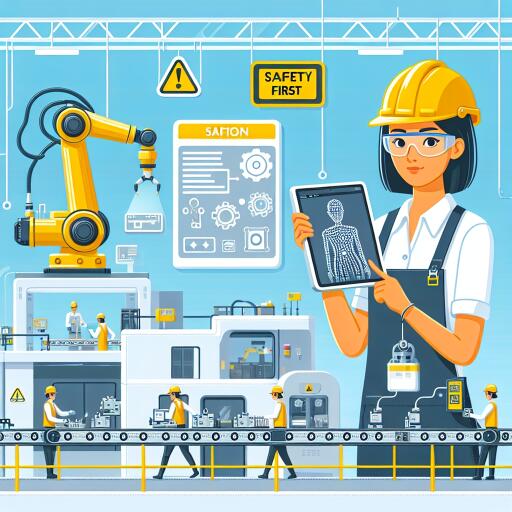Machine Learning: A Game Changer for Safer Workplaces in Manufacturing
Across the global manufacturing landscape, ensuring safety in the workplace presents an ongoing challenge. In the United Kingdom alone, work-related illnesses and injuries contribute to a staggering annual financial toll of over £1 billion, a figure reported by the Health and Safety Executive (HSE) in 2023. However, the emergence of digital technology, particularly machine learning (ML), offers new avenues for enhancing workplace safety and health, signaling a potential paradigm shift for manufacturers worldwide.
A recent comprehensive study, Sphera’s Process Safety Report 2023, unequivocally supports the adoption of digital technologies, revealing that 100% of respondents see technology as a key enabler in improving process safety now or in the future. Machine learning, with its potent mix of automation and self-learning capabilities, stands out as a particularly transformative technology in this domain. This article delves into how ML can be applied within manufacturing to foster safer work environments, showcasing four notable use cases.
1. Automating Hazardous Tasks
Automation of perilous manufacturing processes through ML can significantly mitigate workplace hazards. Collaborative robots (cobots) powered by ML, for instance, can perform complex tasks such as arc welding – traditionally associated with high risks like heat stress and electric shock – while minimizing human workers’ exposure to these dangers. Such cobots continually refine their skills through the learning process, adjusting autonomously to changes in their operating environment to optimize safety and efficiency.
Apart from welding, these ML-enhanced cobots can also take on packaging and palletizing, particularly of hazardous materials, thus further shielding human workers from potential risks. The ability of these robots to adapt and improve their performance in real-time is a testament to the flexibility and resilience that ML brings to the manufacturing floor.
2. Predictive Maintenance for Equipment Safety
Equipment failure in a manufacturing setting not only disrupts production but also poses significant safety risks. Machine learning offers a solution through predictive maintenance technologies, which can analyze vast datasets on equipment performance to anticipate and mitigate breakdown risks before they escalate into safety incidents. This proactive approach ensures that machines are maintained optimally, reducing the likelihood of accidents and enhancing overall performance.
3. Retaining Experienced Personnel
The loss of experienced workers is a critical concern, as highlighted by 52% of respondents in Sphera’s report, which can exacerbate workplace safety risks. ML can support efforts to retain such valuable staff by providing insights derived from data analysis, including employee surveys and performance metrics. By identifying underlying patterns and factors contributing to employee turnover, organizations can implement targeted strategies to improve job satisfaction and reduce churn.
4. Enhancing Cybersecurity Measures
In an age where cyber threats loom large, the importance of robust cybersecurity measures cannot be overstated. The 2017 incident involving the Triton malware attack on a Saudi Arabian petrochemical plant underscores this point. ML-powered cybersecurity solutions can monitor vast networks of data in real-time, detecting anomalies that may signify cyber threats. By identifying and responding to these threats swiftly, manufacturing facilities can prevent potential disasters, ensuring the safety of both employees and physical assets.
Embracing the Future with Machine Learning
The incorporation of machine learning into manufacturing safety strategies represents a forward-thinking approach to workplace safety. By leveraging ML, manufacturers can automate dangerous tasks, enhance equipment maintenance, improve cybersecurity, and retain key personnel, collectively contributing to a safer and more efficient working environment.
Yet, the adoption of ML technologies can be daunting for organizations lacking in-house expertise. This gap, however, can be bridged through collaboration with third-party ML consultants, who can provide the requisite knowledge and support to develop and implement effective ML solutions.
As manufacturers continue to navigate the complexities of workplace safety, the role of machine learning as a catalyst for safer, smarter, and more efficient manufacturing processes is becoming increasingly clear. By harnessing the power of ML, the manufacturing sector can move towards a future where workplace safety is not just a regulatory requirement, but a foundational component of operational excellence.










